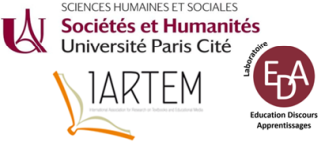Since school year 2020-2021 in Italian school system is introduced a new compulsory subject called “Civic Education”. It is taught through all the other subject, for example Italian, History, Maths and so on and it is compulsory for every order and degrees of schools, from kindergarten to high schools.
The law which governs this new subject tells that civic education revolves around three axes: the study of Italian Constitution, sustainable development and digital citizenship. Sustainable development includes environmental and territorial education, 2030 Agenda SDG, knowledge and protection of the territory.
For this reason, also the textbooks have to change, including topics linked to this new subject, and I decided to examine recent history textbooks for middle schools to understand how and which historical events are considered useful to study and deepen environmental topics and possibly climate change.
I choose to focus on middle school for several reasons. First of all, Italian law manages primary and middle schools together, so the school's programs are consecutive and the same in all Italian middle schools. After these three years, pupils have to choose which kind of schools they want to attend, and each kind of high school has different legislation. Secondly, I think it is an important moment of development of younger students (11-13 year old) and, especially in Italian school system, here they start to approach to study in a more serious way. Last, during the three years of middle school, students study for the first time history from the Middle age to the Contemporary age, so textbooks must be inclusive and comprehensive but at the same time appropriate for the age of the students.
Italian middle schools is composed by three class: first, second and third. Each class has an history book. I would like to take in consideration five different history textbooks edited by five different publishing houses in the last few years. In particular, I will take in consideration textbooks published by Zanichelli, Feltrinelli, DeAgostini, Loescher and Pearson-Edizioni Scolastiche Bruno Mondadori. I would like to analyze and to list how many environmental topics are inside the different books for each volume. It would be a long (historically) analysis from the Middle Age to the contemporary times. Indicatively, middle schools' textbooks have the following division:
1) Volume 1: from the fall of the Roman Empire to the 15th century
2) Volume 2: from the Age of Discovery to the end of the 19th century
3) Volume 3: from the 20th century to today
The variables I would like to take into account for each volume are:
- Direct indication to Civic Education
- Historical period
- Event (main topic in which it is insert, section or unit of the book)
- Sector/field (political, agricultural, cultural, industrial etc.)
- Any personalities mentioned
- Any past-present connections
The final objective is to create an overview of the editorial proposals on the environmental themes linked to Civic Education. I will analyze the data with a descriptive method. The data collected according to the variables stated previously will be inserted into tables. The tables will be divided by volume and by section or unit of the textbook. In this way, it would be easier to identify common factors of the different textbooks and also the choices made by the authors.
Direct indications to Civic Education are easily recognizable because they are often specified into the book. For example, if there is a link with 2030 Development Goals, authors usually include the logo of the intended objective. Otherwise, authors create specific “boxes” or supplementary worksheet where they use to quote “Civic Education”. Or even in the index, you can easily see the references to the topic. In this study, I use the word “data” to identify environmental topics into the history textbook: side-boxes or/and references in the narrative.
On the occasion of the conference, I would like to present the data relating especially to Volume 1 and maybe the first part of Volume 2 of the several textbooks. Everything will be indicated properly. I would focus the first part of my analysis on medieval and early modern history. I think it could be more interesting to understand the choices relating to past history compared to contemporary history.
References:
Castro S. – Gola G. – Talarico R. (edited by), L'insegnamento della storia oggi, Carocci, Roma, 2023
Monducci F. – Portincasa A., Insegnare storia nella scuola secondaria, Utet Università, Torino, 2023
Mortari L., Educazione ecologica, Laterza, Bari, 2020
Panciera W. – Savio A., Manuale di didattica della storia, Le Monnier Università, Milano, 2022
Civic education institutional page on the Ministry of Education website: https://www.istruzione.it/educazione_civica/
- Poster

 PDF version
PDF version

